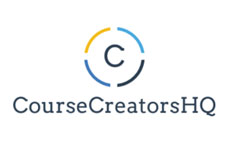
I think nearly every person online has released something to the world… and had no one buy.
There’s something incredibly humbling about the sound of crickets after all your hard work.
So here are five of the most common reasons for a course not selling and what you can do about it.
Reason #1 – Your Promised Transformation
Every course needs to transform a student from where they are to where they want to be.
As the creator, it’s so easy to mess up this transformation! Here are a few ways your transformation might not be working.
- The transformation you’re promising isn’t clear. Make sure you are clear in your webinar or your sales page where your student is right now and where you will take them by the end of the course.
- The transformation isn’t something they need, or they don’t know they need it.
- The transformation is too big (or too small)! Promise enough to make it worth it, but not so much that your prospective student doesn’t believe you.
To fix this, always start with the promise of your course – and then build your course and your sales materials from there.
Reason #2: Your Bucket Is Empty

I have a very needy cat. Marius is wonderful, but he can do some aggressive cuddling when he is desperate for attention!
So my family and I tease about him having an “empty bucket” and that he needs “his bucket filled”.
Your potential students are like this. You have a “bucket” with them. Some things you do will fill the bucket; other things will empty it. Then when it comes time to buy from you, your bucket has to be full enough.
One of my best examples of this occurred when I bought Amy Porterfield’s program. She had filled a bucket with me for years from her podcast. I knew how much she delivered there and I was very confident I’d get my money’s worth (which I did).
Here are some ways to fill the bucket:
- Give away a really wonderful freebie that wows your subscribers.
- Provide excellent content consistently in your blog or podcast.
- Have a joint venture partner share how impressive you are with their audience.
Reason #3: Your Price Point
Price points are so tricky to get correct – because there are so many variables involved. Honestly, sometimes you just need to experiment with pricing and changing your offer. (Just experiment by going up – not by going down, otherwise you may need to refund your early buyers.)
When a student is considering your course, the higher your price point, the more value you need to provide.
Notice I did not say the longer your course should be! A lot of newbie course creators try to put everything they know into their first course, so they can charge more. The problem is that just overwhelms your student.
Actually the best value is when you give them exactly as much as they need – but keep it as simple as possible. Which is honestly tougher to do. It’s easier to spew out everything!
By keeping your course focused on results, you can charge exactly the right amount.
Reason #4: No Urgency
Right now, I really, really want to get new furniture in my family room… but it’s not urgent. There’s nothing to make me buy it now rather than next month or next year.
But a good sale might just push me over the edge to jump in and buy.
Your students may also need a reason to jump in now as opposed to later. One of my favorite ways to do this is with price increases. My first version of the 24 Hour Course Creator was only $19.95. And the next time I offer it live, the price will be $497. Those folks that jumped in at the beginning got a wonderful deal. So a statement about “next time the price will be $x” (as long as it’s true), can help move your students to jump in now.
You can also add urgency by offering a limited time bonus they will only get if they buy now.
Reason #5: Distraction
Your prospective students are easily distracted… and this reason has gotten worse and worse over the years.
Social media and mobile phones are constantly pulling us away from what we are doing. Just this morning I was signing up for a webinar, but I needed to check my calendar to see if I was available. Then I started looking at my calendar and realized I needed to send an email. Then I was gone into my email. They lost me.
One of the best ways to handle distraction is to make sure you are building an email list and sending more than one email about your course.
That way you can pop up multiple times and stay in front of your audience, even if they get distracted!
Also make sure your sales pages and your landing pages are free from distraction. You want one action – either sign up or don’t. Don’t have your website menu listed so they can browse away from you.
Which one of these reasons could be affecting your course sales (or future course sales)? With a little planning, you can tackle them ahead of time to make even more sales!
Is Your Course Idea Any Good?
Let’s find out! Snag your copy of my training right here for FREE.
